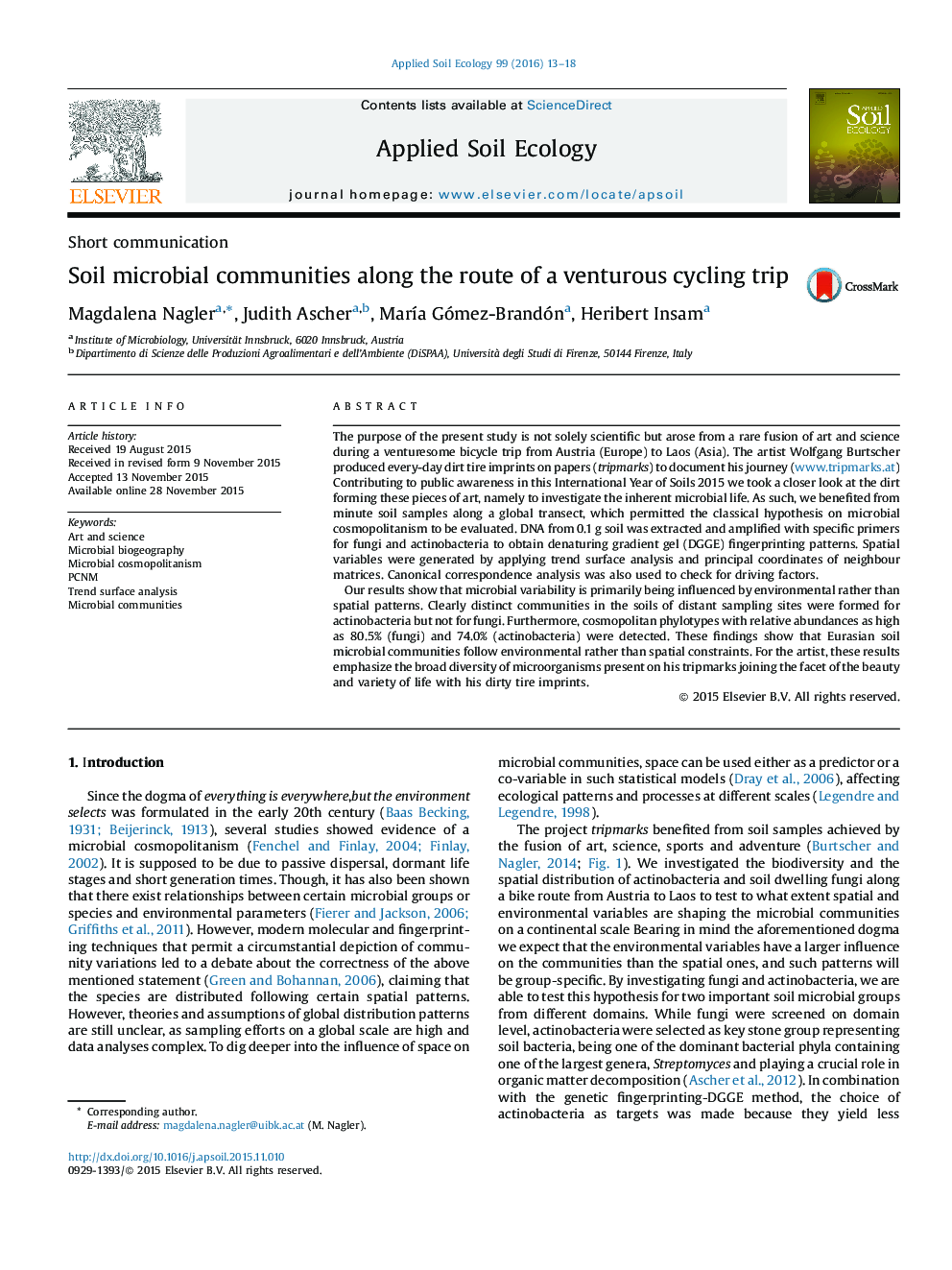| کد مقاله | کد نشریه | سال انتشار | مقاله انگلیسی | نسخه تمام متن |
|---|---|---|---|---|
| 4381832 | 1617784 | 2016 | 6 صفحه PDF | دانلود رایگان |
• We combine art and science to spread the dogma of microbial cosmopolitanism beyond the soil scientist community.
• Two scales of spatial variables and environmental ones were combined in a CCA.
• Microbial communities are influenced by environmental and spatial factors by similar amounts.
• Actinobacteria are forming distinct communities in distinct samples, fungi do not.
The purpose of the present study is not solely scientific but arose from a rare fusion of art and science during a venturesome bicycle trip from Austria (Europe) to Laos (Asia). The artist Wolfgang Burtscher produced every-day dirt tire imprints on papers (tripmarks) to document his journey (www.tripmarks.at) Contributing to public awareness in this International Year of Soils 2015 we took a closer look at the dirt forming these pieces of art, namely to investigate the inherent microbial life. As such, we benefited from minute soil samples along a global transect, which permitted the classical hypothesis on microbial cosmopolitanism to be evaluated. DNA from 0.1 g soil was extracted and amplified with specific primers for fungi and actinobacteria to obtain denaturing gradient gel (DGGE) fingerprinting patterns. Spatial variables were generated by applying trend surface analysis and principal coordinates of neighbour matrices. Canonical correspondence analysis was also used to check for driving factors.Our results show that microbial variability is primarily being influenced by environmental rather than spatial patterns. Clearly distinct communities in the soils of distant sampling sites were formed for actinobacteria but not for fungi. Furthermore, cosmopolitan phylotypes with relative abundances as high as 80.5% (fungi) and 74.0% (actinobacteria) were detected. These findings show that Eurasian soil microbial communities follow environmental rather than spatial constraints. For the artist, these results emphasize the broad diversity of microorganisms present on his tripmarks joining the facet of the beauty and variety of life with his dirty tire imprints.
Figure optionsDownload as PowerPoint slide
Journal: Applied Soil Ecology - Volume 99, March 2016, Pages 13–18
